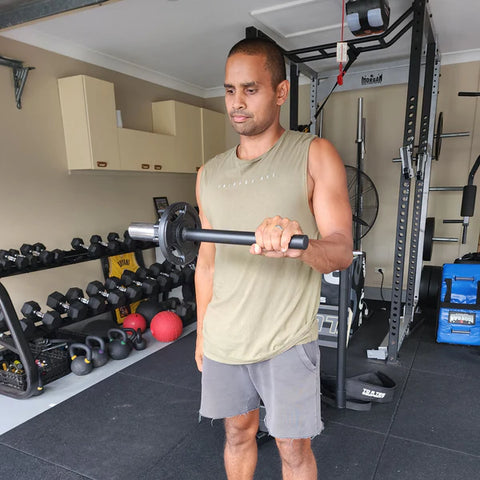
Innovative Uses for the Wrist Bar: Enhance Your Wrist Strength and Flexibility
Explore six innovative exercises using the Wrist Bar to enhance your wrist strength, flexibility,...
Nordic curls have become increasingly popular among athletes and fitness enthusiasts due to their effectiveness in strengthening the hamstrings. Known for their role in injury prevention and enhancing athletic performance, Nordic curls are a valuable exercise for anyone looking to improve their lower body strength. But whether you're an elite athlete or someone new to exercise, you might be wondering: Are Nordic curls safe?
In this blog, we’ll explore the safety of Nordic curls, explain how to perform them correctly, and provide guidance on how to regress into full Nordic curls if you're not quite ready for the full movement. Whether you're a seasoned athlete or new to working out, this guide will help you incorporate Nordic curls into your routine with confidence.
Nordic curls, also known as Nordic hamstring curls, are an exercise that primarily targets the hamstrings—the muscles located at the back of your thighs. The exercise involves lowering your upper body toward the ground from a kneeling position while keeping your lower legs anchored, usually under a padded bar, with a partner holding your ankles, or using the Nordic mini bench. The Nordic mini bench is specifically designed to provide a stable and comfortable setup for performing Nordic curls, allowing you to anchor your feet securely without the need for additional assistance. This movement requires significant strength in the hamstrings and control through the entire range of motion.
Nordic curls are celebrated for their ability to strengthen the hamstrings eccentrically, meaning they focus on controlling the lengthening of the muscle. This type of training is particularly beneficial for preventing hamstring injuries, which are common in sports that involve sprinting, jumping, or sudden changes in direction.
However, the benefits of Nordic curls extend beyond athletes. Everyday people can also gain from this exercise by improving their hamstring strength, which is crucial for maintaining balanced lower-body strength, supporting the knees, and preventing injuries related to everyday activities like walking, running, or even sitting for extended periods.
The safety of Nordic curls depends on how they are performed and your current fitness level. While this exercise is intense and can place significant stress on the hamstrings and knees, it can be safe and highly beneficial when done correctly. Here are key factors to consider:
If you're not ready to perform full Nordic curls, or if you're concerned about the strain they might put on your body, you can build up to them gradually using regression techniques. These techniques help you develop the necessary strength and control without risking injury.
To maximise the benefits and minimise the risks of Nordic curls, follow these safety tips:
Nordic curls are a powerful exercise for building hamstring strength and preventing injuries, making them a valuable addition to any fitness routine. Whether you're an athlete looking to enhance performance or someone aiming to stay healthy and active, Nordic curls can offer significant benefits—provided they're done safely.
If you're not yet ready for full Nordic curls, don't worry. By using regressions like resistance bands, box-assisted curls, or focusing on other eccentric hamstring exercises, you can gradually build the strength and control needed to perform Nordic curls confidently.
Remember, the key to safety lies in proper form, gradual progression, and listening to your body. By following these guidelines, you can confidently incorporate Nordic curls into your workout and reap the rewards of stronger, more resilient hamstrings.